CAT 2022: Exam Highlights
Significant modifications to the CAT exam pattern have occurred over the past two years, and the covid-19 pandemic may be to blame. Exam format, sectional time limits of the CAT exam, scoring, and more are covered in this article regarding the CAT 2022 exam design. Exam takers in 2022 will benefit from knowing the CAT exam’s structure today.
In addition to the CAT 2022 exam schedule and notification, a new CAT exam pattern and test method have been released. Anyone considering taking the CAT in 2022 should study the most up-to-date CAT exam pattern and syllabus for 2022. The CAT 2022 exam will follow the same schedule as the previous years, with three testing windows available throughout the day (CBT).
CAT Exam Pattern
The CAT 2022 exam pattern consists of three sections:
- Verbal Ability (Language Proficiency) and Reading (VARC)
- Data Interpretation and Logical Reasoning (DILR)
- Quantitative ability (QA)
The CAT exam is held as a two-hour computer-based test (CBT). Each section has a separate time limit of 40 minutes. The test pattern for CAT 2021 is shown below. This will give you an idea of what you can expect from CAT2022.
The number of Sections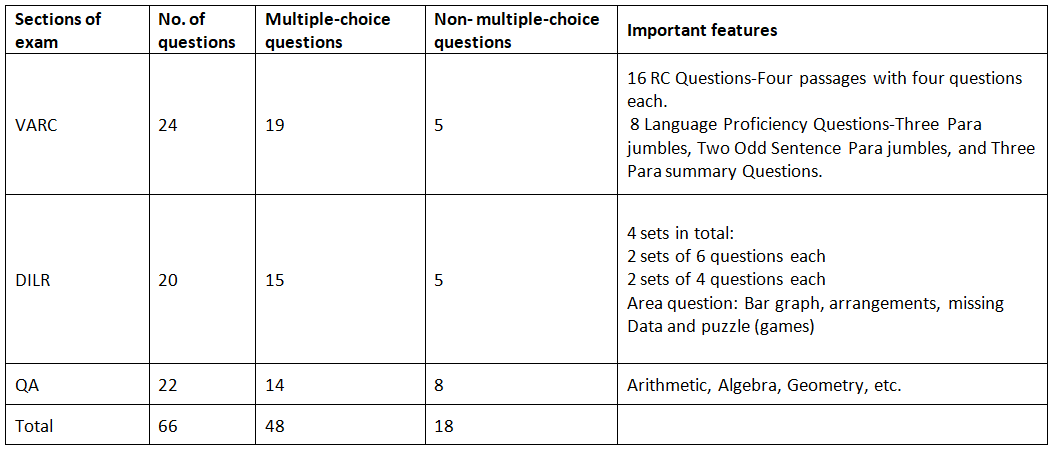
CAT Exam Pattern 2022- Important Points
- During the CAT 2022 exam, candidates will have access to an on-screen calculator
- Potential candidates can see the current time using the digital clock displayed on the screen
- Candidates will be given sheets for draught work that must be submitted following the conclusion of the CAT exam for the MBA
- Aspirants must complete each section before moving on to the next
- You can get the CAT practice test when it becomes available on the official CAT website (iimcat.ac.in). It reveals the overall and sectional IIM CAT exam structure.
CAT 2022 will be split into three halves, as follows:
- Morning session (8:30 am – 10:30 pm)
- Afternoon session (12:30 pm – 2:30 pm)
- Evening session (4:30 pm – 6:30 pm).
In addition, the CAT test pattern divides the work into three sections, each with a time limit. Candidates cannot choose the order in which they will try the sections. Also, you cannot move back and forth between sections. Therefore, it is important to understand the time limit for each section in order to try the treatise accurately.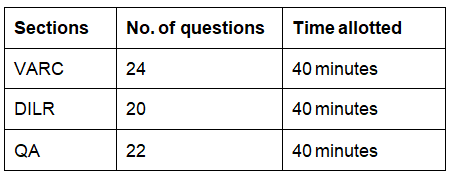
Marking Scheme

The CAT2022 exam is computer-based. Therefore, candidates must enter their answers into the computer. Candidates must select one of the options offered when entering an answer-
- Save and Next: Candidates select and save an answer and proceed to the next question
- Delete Answer: Candidates can delete the answer to the question they answered
- Mark for review and continue: Candidates can mark and answer unknown answers for review and proceed to the next question
Pattern Analysis
CAT 2021 was divided into three slots. Morning slot, afternoon slot, and evening slot. Slot 2 had a slightly higher overall LOD (Level of Difficulty) than slot 1, while slot 3 had a similar LOD to both slots. However, the LOD is slightly different between the slots in the three sections. The difficulty levels recognized in all three sections of the slot are:
- CAT 2021 VARC slot 3 ≳ CAT 2021 VARC slot 2 ≳ CAT 2021 VARC slot 1
- CAT 2021 DILR slot 3 = CAT 2021 DILR slot 1
- CAT 2021 QA Slot 3 > CAT 2021 QA Slot 2 > CAT 2021 QA Slot 1
- CAT 2021 Slot 1 had a slightly higher overall difficulty than CAT 2020. The difficulty of the three sections was also relatively the same as CAT 2020
CAT Quantitative Aptitude Pattern
Most candidates are intensively preparing for this section. This is because the CAT test patterns and syllabus in this section are the most fully developed of any section. This is the section where most candidates will be tested or interrupted.
- The QA section of CAT 2021 consisted of a total of 22 questions with 8 non-MC questions
- Compared to compatriots, there are no specific subdivisions associated with more important subjects
- Therefore, candidates must go through the entire syllabus to ensure success in this section
Previously, CAT was known for the difficulty of the QA section, but recently IIM has reduced the difficulty of this section to accommodate non-engineers. This also increased the score and cutoff for this section. However, lately, the complexity of QA questions has diminished. Some of the questions turned out to be very simple in terms of difficulty. The only thing is that they are scattered throughout the section.
CAT Verbal Ability & Reading Comprehension Pattern
In the verbal section, the CAT test pattern over the last three years shows that the part is made up of two major components.
- Reading Comprehension
- Verbal ability
Many applicants were amazed at the difficulty of the CAT2021 section, which should be a warning to CAT 2022 applicants. This section of the CAT exam pattern should not be cancelled just because it has been less difficult in the last few years.
Reading Comprehension
- It accounts for around 67% of the questions (16 out of 24 questions)
- Question format: MCQs and TITA (Type in the answer) questions
- This section usually has 5 passages (3 majors and 2 minors)
Verbal ability
- A relatively small subsection with only 8 questions
- The CAT exam patterns and syllabus in this section contain questions of the form:
- Jumbled paragraph
- Oral reasoning
- Summary question
- Facts-Conclusions-Judgments
CAT Logical Reasoning & Data Interpretation Pattern
Data interpretation and inference is the second section of the CAT exam. Candidates can only try it after submitting the VARC section in the CAT exam.
- This is the most dynamic section of CAT, and almost every year new types of questions are introduced
- Each set is of at least 12 marks, so it’s a good idea to be very careful when choosing a question
- DILR is always one of the hardest sections to crack. However, in this section, the sunlight is hidden behind the dark clouds. The question may seem difficult at first, but when the candidate advances the question and connects the missing points, everything becomes very easy
- Selection of a set to attempt is the most important task in this section because if you select a hard set initially, it might not be solved and will waste your time and that leads to tension in the exam, and you will not perform as per your capabilities.
CAT Exam Pattern Analysis: Changes Over the Years
The pandemic has radically changed the pattern of CAT trials. Since the introduction of Covid-19, the number of questions and the time allotted have been reduced. In CAT 2019, candidates had to try 100 questions within 3 hours. CAT 2021 had 66 questions to be completed in 2 hours. However, prior to that, the test pattern remained the same for the fifth consecutive year. The following is an overview of the test patterns over the last 10 years.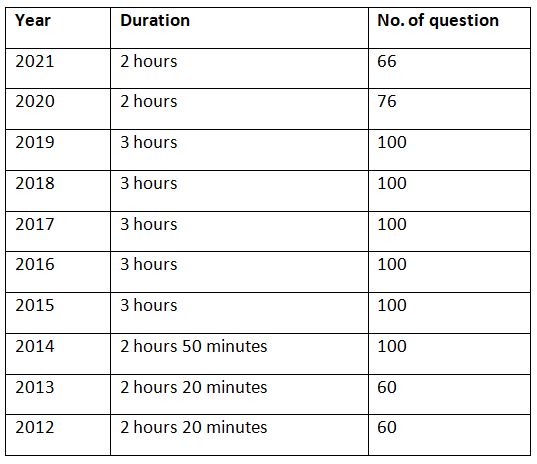
CAT Exam Pattern vs Other MBA Entrance Exams – A Comparison
CAT Vs XAT

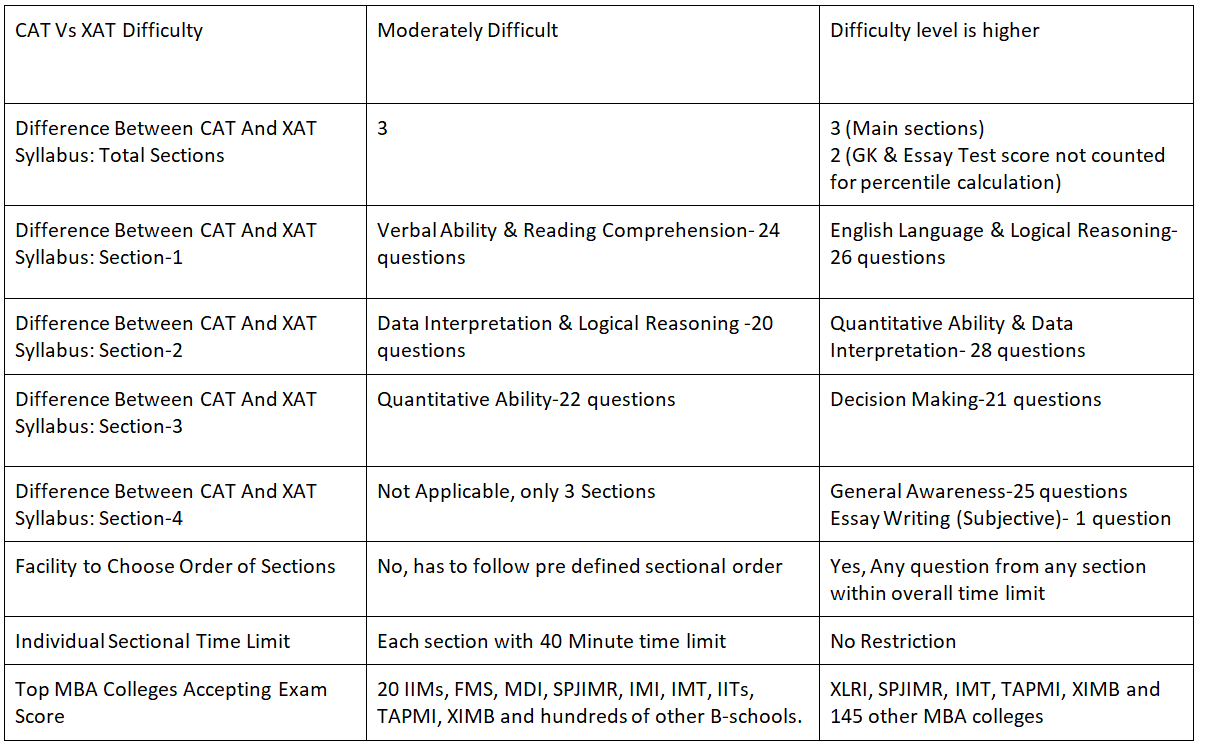
CAT Vs IIFT
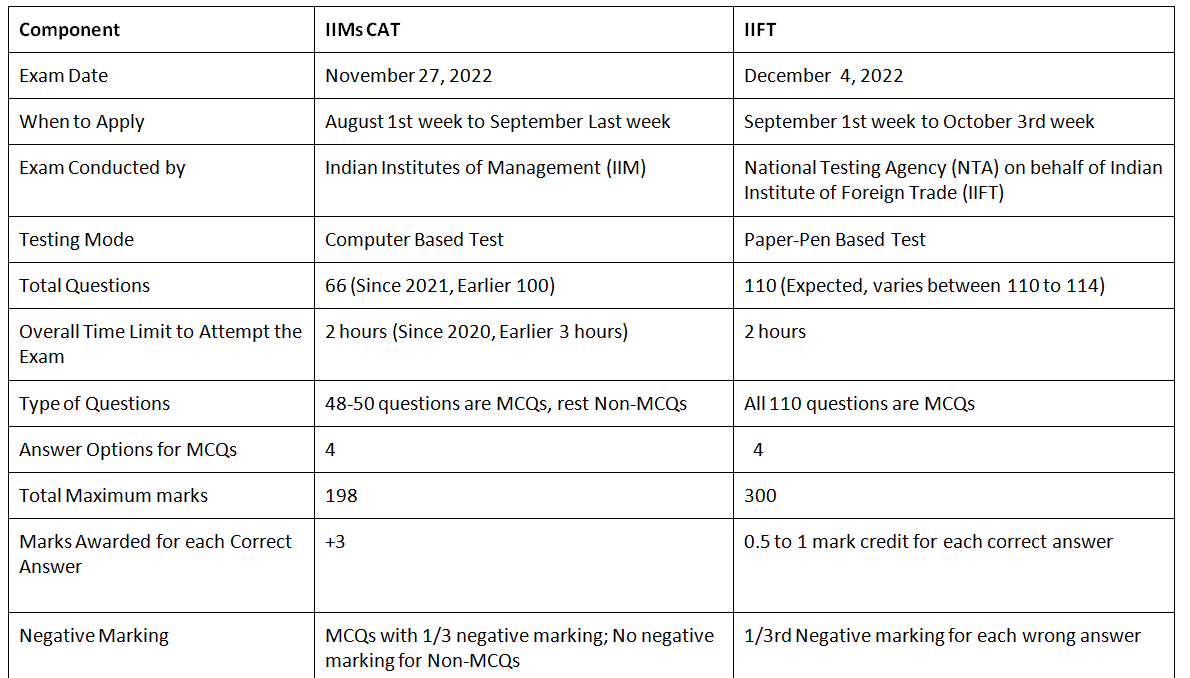
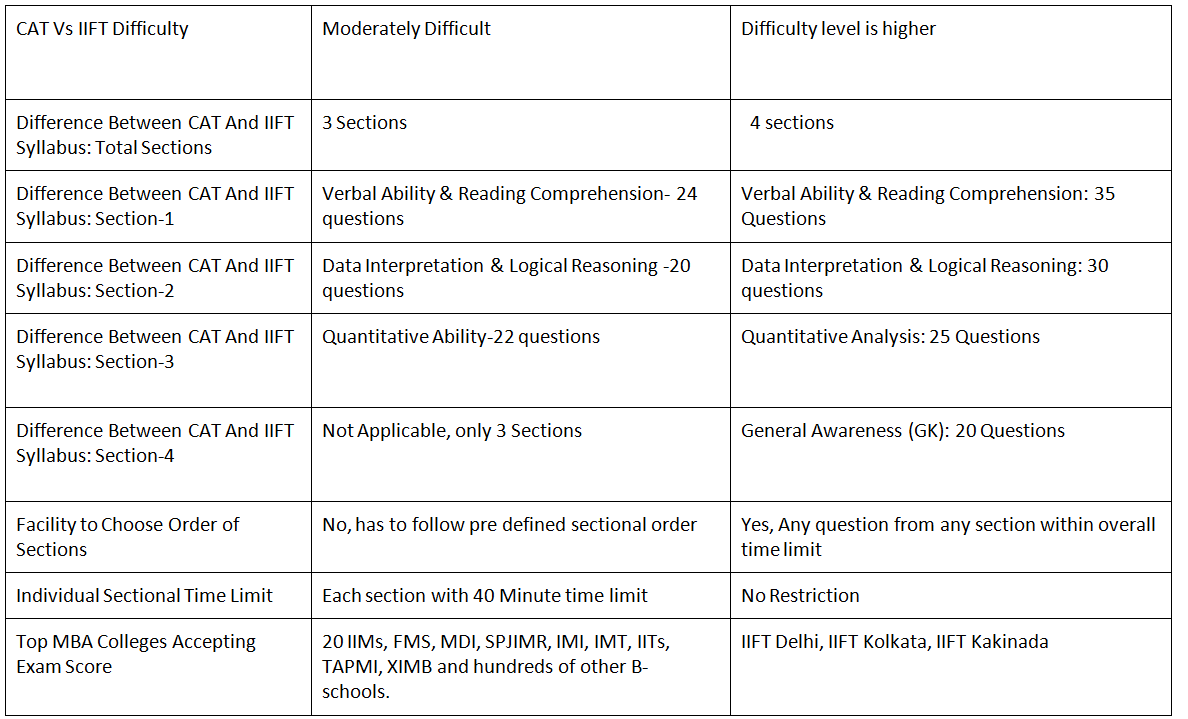
CAT Vs SNAP

CAT Vs CMAT
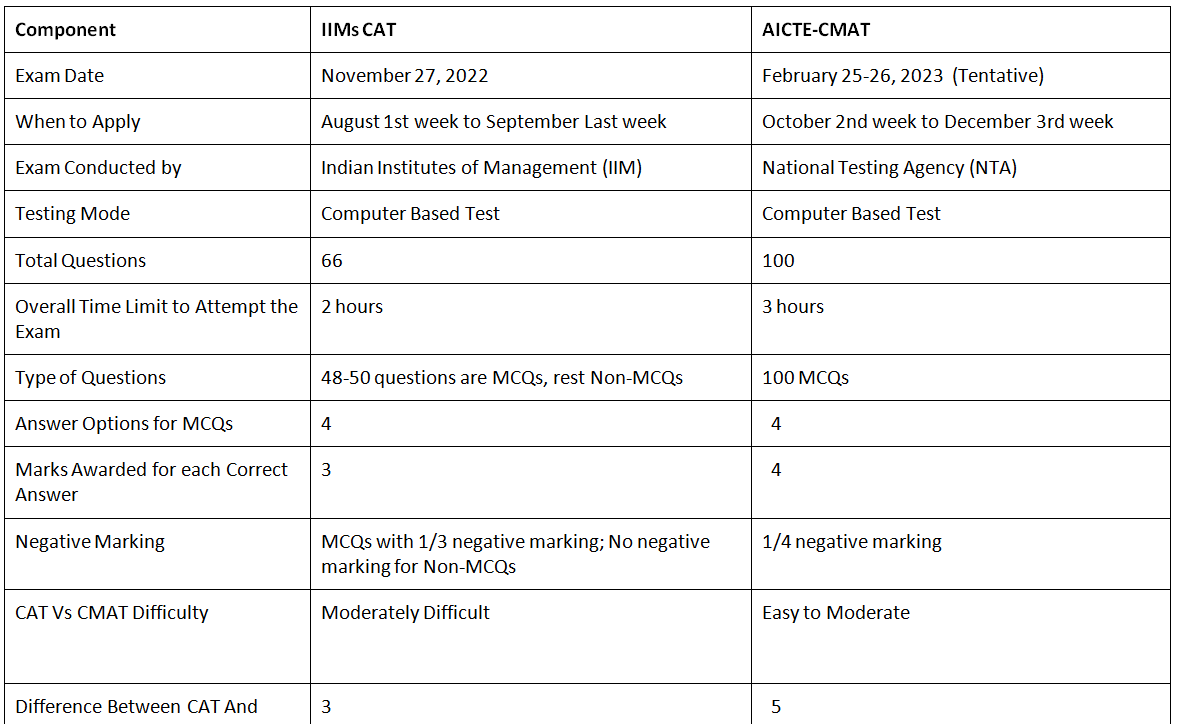
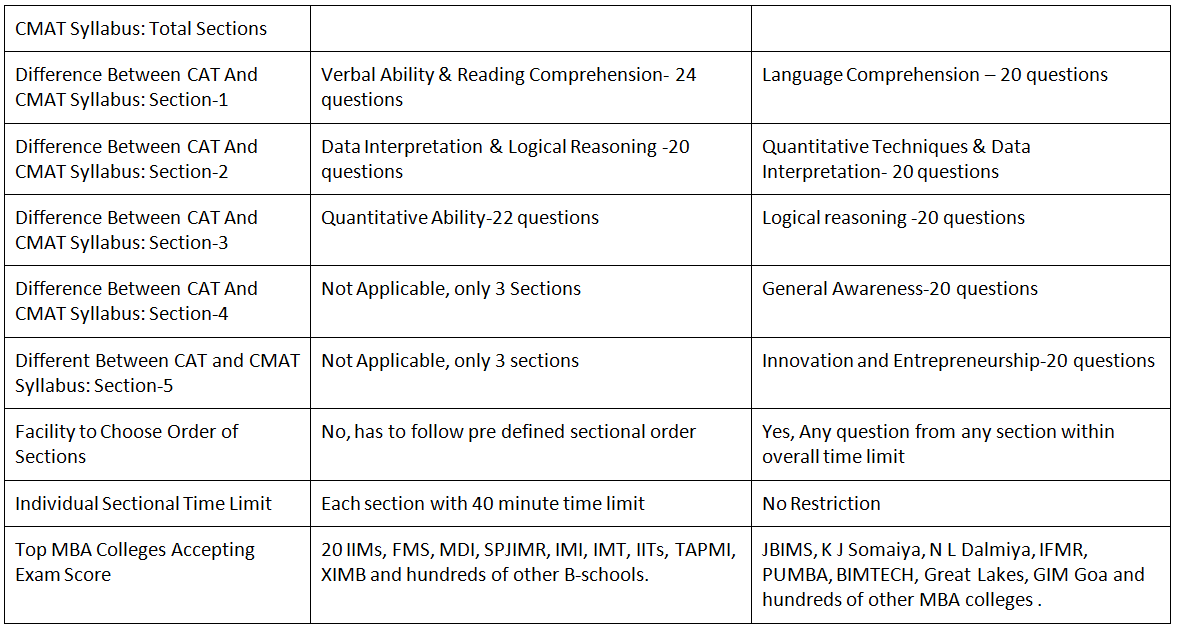
CAT Paper Analysis of Previous Years
Analysis of CAT 2021
CAT 2021 was moderate to challenging, although the VARC part was difficult in all three slots. VARC was harder than DILR/QA. Third-slot QA was harder than slots 1 and 2. CAT 2021 question breakdown:
Analysis of CAT 2020
CAT 2020 was somewhat difficult, however, the VARC component was difficult in all three shifts. VARC was harder than DILR/QA.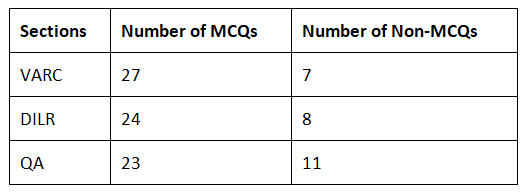
Tips to prepare CAT exam
- The weights of each section are about the same, indicating that each section should be given the same importance when learning the basics
- The mock then plays an important role in deciding which route the CAT is ready to go
- The topics where the applicant gets the most points is the most conceptually clear to him
- Therefore, while preparing you can spend less time on these topics, and you can focus on the topics with the lowest score
- After a while, the mock performance needs to be reassessed
- Applicants need to make sure that the areas where they are strongest do not slip and that there is some improvement in the areas where they are focused.




















